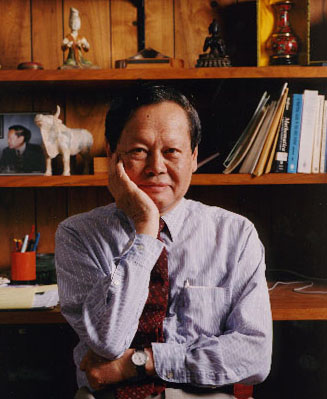
JIANGYONG JIA
Adjunct Professor
Physics and Astronomy
jiangyong.jia@stonybrook.edu | Chemistry
Curriculum Vitae. (Last updated: 2023 Jul 20)
Biography
Jiangyong Jia is a professor at Stony Brook University and a Senior physicist at the
Brookhaven National Laboratory. He received his Ph.D. from Stony Brook University
in 2003 and was a Postdoc at Columbia University until 2006 before joining Stony Brook
University. He is a member of the ATLAS experiment at the Large Hadron Collider (LHC)
at CERN, the STAR experiment at the Relativistic Heavy-Ion Collider (RHIC) at BNL,
and the ePIC experiment at the future Electron-Ion Collider (EIC) at BNL.
Research Statement
Jiangyong's research focuses on understanding the dynamics and properties of the Quark
Gluon Plasma (QGP) created in high-energy collisions of atomic nuclei. He accomplishes
this objective by measuring the two- and multi-particle correlations in these collisions,
which quantify the collective flow response of the QGP to its initial condition, analogous
to using CMB to infer the primordial fluctuations in the early Universe. Jiangyong
has pioneered several seminal collective flow measurements in the ATLAS experiment
since 2010, which established the conditions for creating QGP and its various signatures
in systems as small as proton-proton collisions and as large as lead-lead collisions.
See Physical Review C 86 (1), 014907 (620 citations), Physical review letters 110
(18), 182302 (657 citations), and Physical review letters 116 (17), 172301 (400 citations).
Recently, Jiangyong has pioneered the method of using collective flow as an imaging
tool for studying the structure of heavy atomic nuclei via high-energy collisions
of Uranium, Gold, Ruthenium, and Zirconium in the STAR experiment. Preliminary studies
show that high-energy collisions can provide structure information with a precision
comparable to that achieved in traditional low-energy nuclear structure experiments,
such as gamma spectroscopy and laser spectroscopy. Thus opening up new interdisciplinary
connection across different area of nucear physics. He has published this idea in
many papers, including Phys.Rev.Lett. 131 (2023) 2, 022301, Phys.Rev.Lett. 128 (2022)
2, 022301, Phys.Rev.C 105 (2022) 1, 014905, Phys.Rev.Lett. 127 (2021) 24, 242301.
Jiangyong is also involved in the R&D for the ePIC detector at the future EIC experiment,
which promises to image the full three-dimensional structure of protons and nuclei
in both position and momentum space and answer questions about the origin of mass
and spin of protons.
Jiangyong's lab is open to motivated Ph.D. and M.S. students who wish to pursue a
career in frontier research in high-energy particle and nuclear physics.
|
|
|


